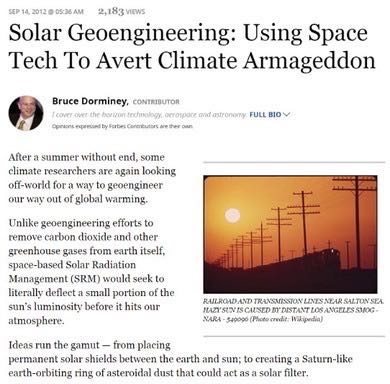3.1 A solar shield
The simplest concept for reducing the energy in is to ‘dial down’ the Sun: to reduce the amount of solar radiation reaching the Earth using a solar shield or solar sail.

In 1989, scientist James T. Early suggested that a space-based glass shield might be made from silicon in the soil on the Moon to offset the greenhouse effect. Art then imitated life as Arthur C. Clarke and Stephen Baxter wrote the science fiction book Sunstorm in 2005 about a shield protecting Earth from solar storms, many years after the idea was first suggested in a scientific paper.
So the suggestion of reflecting, or deflecting, sunlight with one or more solar shields – also referred to as sunshades or solar sails – has a long and imaginative history. This seemingly outlandish idea to ‘avert Climate Armageddon’ is still in the air (Figure 3).
As Earth’s Energy Balance Consultant, you could design a reflective solar shield located between the Sun and the Earth to reflect some of the Sun’s radiation. In theory it is possible to design a solar shield which could offset any amount of CO2.
Recall the four RCPs you studied in Session 4: scenarios of future greenhouse gas concentrations and other human-caused changes. In all except the lowest, RCP2.6, the atmospheric concentration of CO2 reaches at least double preindustrial levels by the end of the century: increasing from 280 ppm in preindustrial times to around 560 ppm or more.
Activity 2
a.
0.1%
b.
1%
c.
10%
d.
20%
The correct answer is b.
Answer
The answer is 1.6%. This is quite a small number! So you can see that only small adjustments in solar radiation are needed to offset the effects of increasing greenhouse gas concentrations.
You could choose to place a solar shield in a stable location, and around four times further away than the Moon. If you wished to block 1.6% of incoming solar radiation, to counter the global warming effect of doubling CO2 concentrations, you could use a circular shield of around 2000 km in diameter: roughly the distance from London to the southern tip of Italy.
Solar shields might remain the realm of science fiction for the foreseeable future. So how about making the Earth itself more reflective?

